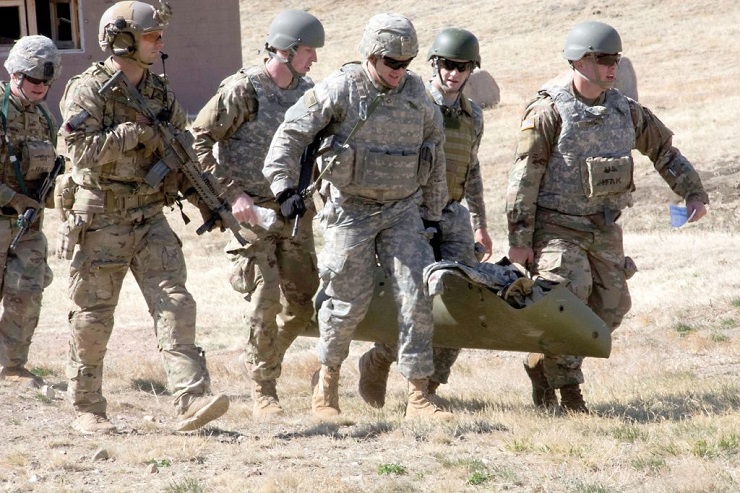Eighteen years ago, the US led the NATO invasion of Afghanistan for the stated purpose of toppling the Taliban government and crushing the Al Qaeda forces they were harboring. Now, after more than 4,000 US military personnel and contractors have been killed, and over a trillion dollars spent, a peace agreement between the USA and the Taliban appears to be in the works.
But what led up to this optimism about a possible US withdrawal from Afghanistan and a reduction in chaos? The current hope of peace was preceded by a string of revelations about how completely false the western media’s narrative and the words of US officials about the war have been.
In December of 2019, the Washington Post revealed that it had obtained a string of documents revealing that US officials had consistently lied through their teeth. Progress wasn’t being made in Afghanistan. The country was in a state of confusion and chaos, amid constant setbacks. Due to a lack of progress and clear strategy, the generals overseeing US Afghan operations had also changed frequently during the 18 years of occupation.
Supporting The Terrorism of “The Enemy”
Furthermore, it turns out that protection money has been routinely paid to the Taliban by US military corporations. In the hopes of preventing terrorist attacks on their facilities, US corporations contracted by the Pentagon have paid out billions of dollars to the US governments’ officially designated battlefield enemy. It is a direct violation of US law to provide any material support to the Taliban, but the law concerning this has been routinely disregarded with the Pentagon knowing and approving of it.
This new revelation fits in with some older revelations. In 2014, the New York Times revealed that the Port Authority Police of New York and New Jersey had infiltrated an Afghanistan based terrorist group called Jundallah. According to the New York Times, Thomas McHale traveled to Afghanistan and Pakistan, “The unusual origins and the long-running nature of the United States’ relationship with Jundallah are emblematic of the vast expansion of intelligence operations since the terrorist attacks of Sept. 11, 2001.”
According to the New York Times, McHale operated a network of informants within Jundallah while the group conducted terrorist bombings against the Islamic Republic of Iran. McHale traveled to Afghanistan, operating undercover as a member of Jundallah, even after the US government officially designated Jundallah as a terrorist group in 2010.
Jundallah is a group of Sunni, Wahhabi extremists who view the Islamic Republic as “Shia Apostates.” Their goal is to break away the predominantly Sunni regions of Iran that border Afghanistan. While McHale operated within Jundallah in 2006, they bombed a bus of Iranian Revolutionary Guards. Prior to that, they had attacked the motorcade of Iranian President Ahmadenjad.
China is currently cracking down on Islamic separatists in the Xinjiang Autonomous Region. Extremists who want to break Xinjiang away from China have been linked to knife attacks and other violence in China. Not surprisingly, support for the terrorist groups and extremists in Xinjiang has come from just over the border, in Afghanistan.
A Heroin Boom
Since the 2001 US-led invasion, Afghanistan has become the world’s leading opium producer, accounting for roughly 89% of total heroin production. Heroin is a very big problem in Iran, with almost 3 million users, the highest rate of heroin use of any country in the world. Most of the heroin flowing in Iran originates right over the border in Afghanistan.
Russia, north of Afghanistan, also faces a big problem from heroin being smuggled in. China has worked hard to crack down on Afghan heroin as well.
Prior to 2001, the world was amazed at how much the Taliban had reduced opium poppy production. US and UN officials praised the Taliban for its anti-drug efforts. The US invasion has dramatically reversed this, with poppy production skyrocketing.
A Strategic Epicenter of Chaos
Since 2001 Afghanistan has been a mess of instability. The US-led occupation has not stabilized the country. It has caused drugs and terrorist groups to get bigger, and intensified poverty and insecurity. The United Nations reports that over 100,000 civilians have been killed or injured in Afghanistan over the past 10 years.
Not only have over 4000 US troops and contractors died, but in 2017, a New York Times article revealed that a large number of CIA agents have been killed in Afghanistan, as well. The details of their deaths remain largely classified, but a number of them have been embedded with local fighting groups and militias.
Furthermore, in 2015, it came to light that US troops were told to ignore the fact that underage boys were being used as sex slaves by Afghan soldiers. This practice of homosexual pedophilia among US aligned Afghan fighters was widespread.
So, what exactly has the United States been doing in Afghanistan for the past 18 years?
The answer can be easily discovered by looking at a map. Afghanistan sits at the center of the Eurasian world Island. On three sides of it are the top three geopolitical rivals of the United States.
Afghanistan has been kept as a strategic epicenter of chaos. The drugs, terrorism, sex trafficking and other instability in Afghanistan has spilled over into Iran, Russia, and China. All three countries have been forced to devote huge efforts to defeating security threats based in Afghanistan.
An unstable Afghanistan serves to weaken three major anti-imperialist states, and help maintain US global dominance.
Does the new peace deal, in which the Taliban will play a role in the government, pave the way to more stability?
The larger question is… does the USA really want stability? All evidence points to the contrary.
Caleb Maupin is a political analyst and activist based in New York. He studied political science at Baldwin-Wallace College and was inspired and involved in the Occupy Wall Street movement, especially for the online magazine “New Eastern Outlook”.

